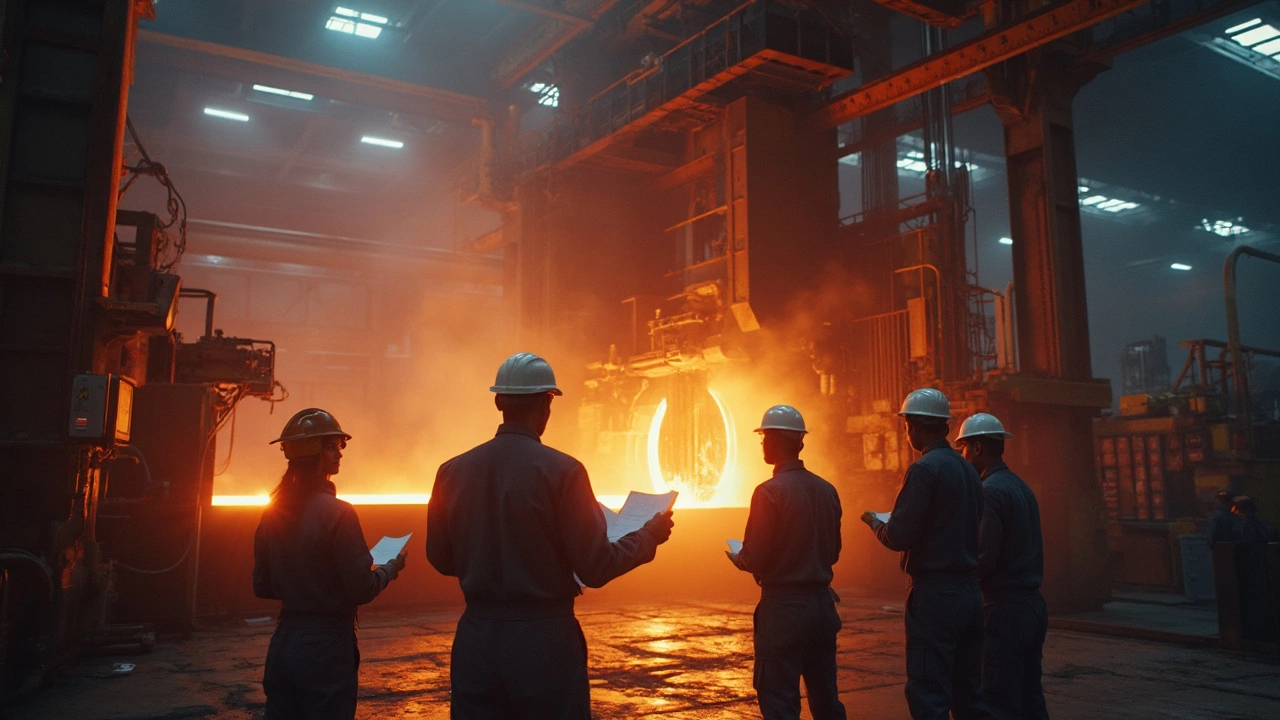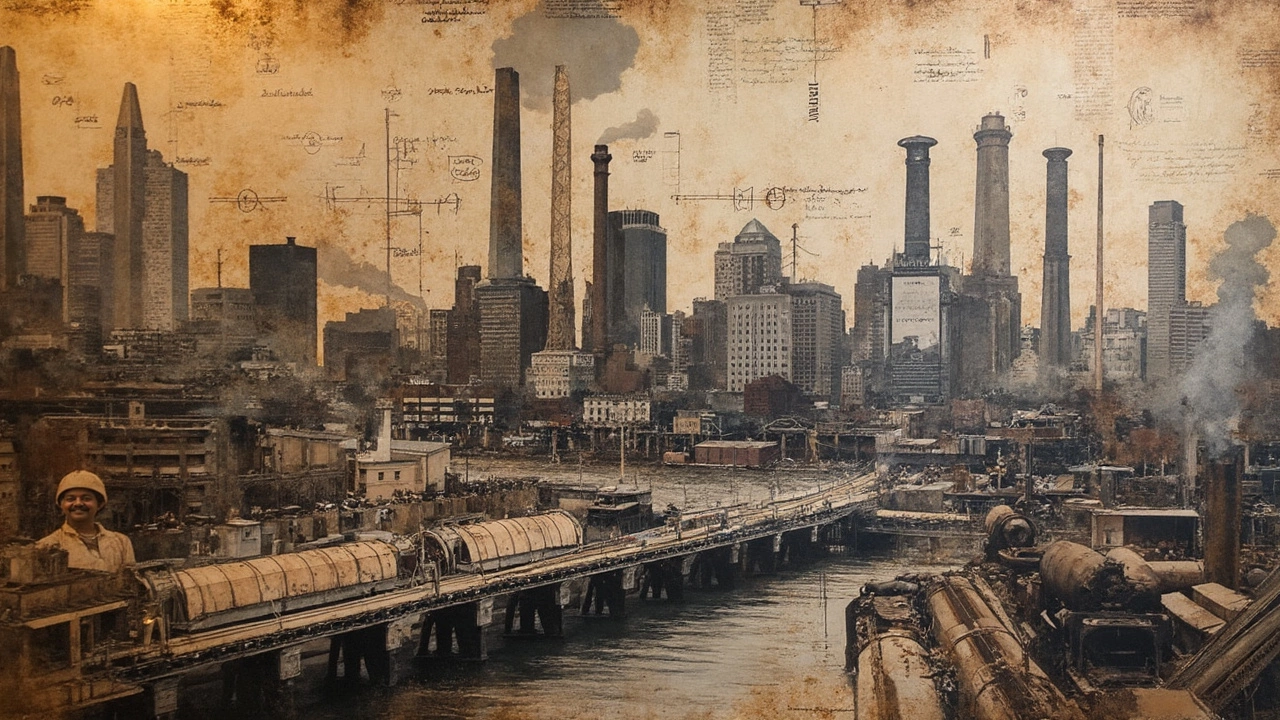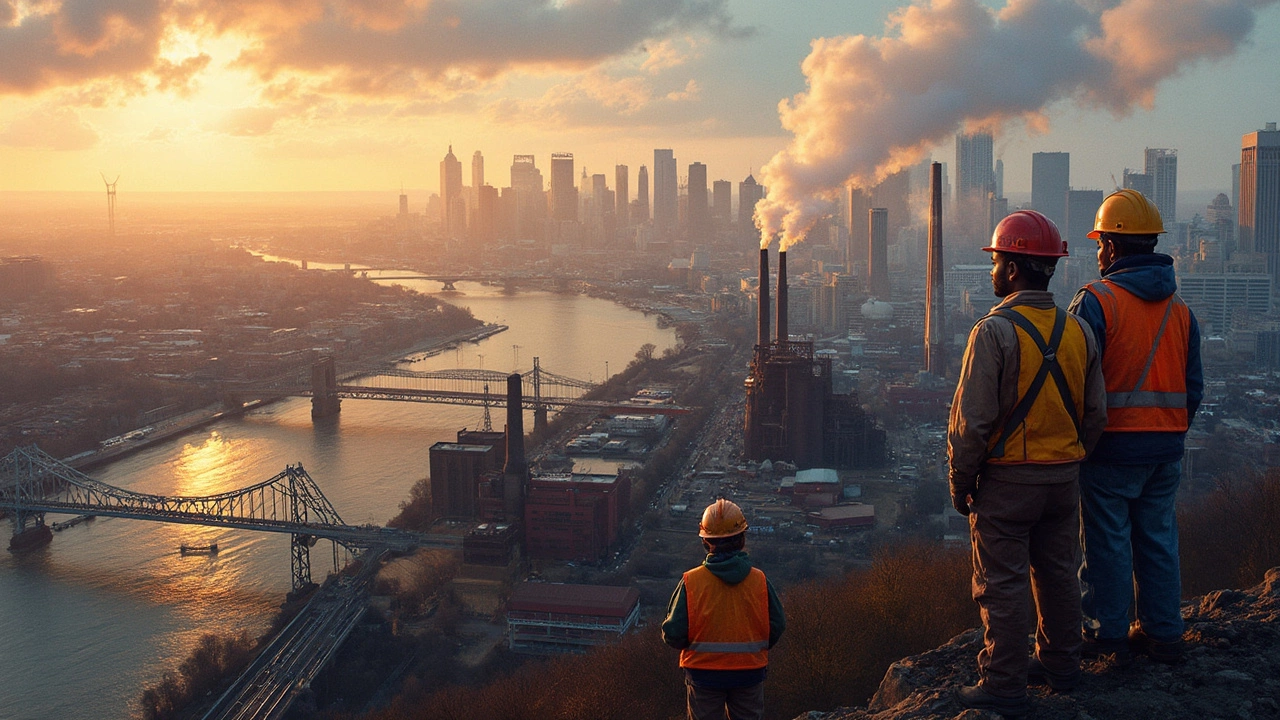Steel shapes just about everything in our daily lives—sky-high buildings, cars, even those kitchen sinks that never seem to get a scratch. But if you've ever wondered where most of that tough stuff comes from in the U.S., you're not alone. It's a hot topic, especially for anyone into manufacturing or considering steel investments.
Pittsburgh pretty much ruled the steel scene for decades. The city didn't just make a lot of steel; it was the symbol of American industry at its peak. Folks even nicknamed it the 'Steel City.' Even if you think those days are gone, Pittsburgh's legacy still shapes how and where steel is made in the country today.
If you're eyeing the steel game—maybe you're running a plant, sourcing materials, or just curious about the scene—knowing the power cities of steel is super helpful. Location shapes costs, shipping times, job access, and even the quality of steel you get. Understanding how one city pulled ahead helps you spot new trends or avoid rookie mistakes.
- The Rise of Pittsburgh as Steel City
- Why Pittsburgh? Natural Advantages and Innovation
- How Times Changed: Shifts in Steel Production
- Modern U.S. Steel Hubs Beyond Pittsburgh
- Tips for Navigating the Today’s Steel Scene
The Rise of Pittsburgh as Steel City
Pittsburgh staking its claim as the steel production champ isn’t just a cool bit of trivia—it shaped how the city looks and works today. Back in the late 1800s, Pittsburgh wasn’t the most obvious choice for heavy industry. But the city had two big things going for it: rich iron ore nearby and loads of coal in western Pennsylvania. That made it way easier to set up efficient mills right on the riverbanks, cutting shipping costs and smoothing out logistics.
By 1901, Andrew Carnegie’s U.S. Steel Corporation—the first billion-dollar company in America—set up shop in Pittsburgh. His secret sauce was making steel at massive scale, which sent costs down and pushed out rivals. By the start of the 20th century, Pittsburgh was churning out more steel than any other city in the country. The Monongahela, Ohio, and Allegheny Rivers made it easier to move out supplies and finished goods, which attracted even more factories.
The numbers tell the story. At its height in the 1950s, steel mills in Pittsburgh rolled out nearly half the nation’s steel. This wasn’t a bunch of small shops, either. These were huge plants hiring thousands. If you lived near the city, odds were someone you knew worked for a steel company or built things that needed steel.
| Year | Total U.S. Steel Output (Million Tons) | Pittsburgh’s Share (%) |
|---|---|---|
| 1901 | 10 | 20% |
| 1950 | 100 | 48% |
| 1970 | 125 | 40% |
Pittsburgh became famous for its smokestacks, railroads, and bridges—almost all built with local steel. The city’s identity tied itself to steel so tightly that its pro football team literally became the Steelers.
For anyone interested in industrial history or the business side of manufacturing, Pittsburgh’s rise shows how location, resources, and big bets by bold investors can change the face of a city. It wasn’t just about pouring metal—it was about being smart with what nature gave you and what business demanded at the time.
Why Pittsburgh? Natural Advantages and Innovation
Pittsburgh didn’t become the center of steel production by chance. It had several built-in perks that gave it an edge. For starters, the city sits right where three major rivers—the Allegheny, Monongahela, and Ohio—meet. That meant easy shipping for both raw materials and finished steel. Moving tons of heavy stuff was a lot simpler when you could load it on a boat instead of hauling it over land.
Then there’s the natural resources. Southwestern Pennsylvania is full of coal, and that’s a big one. Making steel needs coal to fire up the blast furnaces, and it’s heavy and expensive to move. By already having a ton of it nearby, Pittsburgh kept production costs lower than other places had to pay. Throw in nearby iron ore from Minnesota (shipped in cheap by water), and the recipe was set.
But it wasn’t just about luck. Pittsburgh’s industrial families—think Carnegie and Frick—poured money into cutting-edge technology. Andrew Carnegie set up open-hearth furnaces, which made steel stronger and more consistent. Local inventors and workers weren’t afraid to try new things, tweaking processes to save time and money. That attitude put Pittsburgh one step ahead of other cities stuck in the old ways.
Here’s a snapshot with real numbers from Pittsburgh’s steel heyday:
| Year | Pittsburgh Steel Production (Million Tons) | U.S. Total Steel Production (Million Tons) | Pittsburgh's % of U.S. Output |
|---|---|---|---|
| 1910 | 7.3 | 26.5 | 27.6% |
| 1945 | 32.3 | 85.6 | 37.7% |
| 1973 | 27.0 | 89.8 | 30.1% |
If you had a steel business in this era, setting up shop outside of Pittsburgh probably meant you paid more for materials—and maybe had a tougher time finding top talent. Many of the country’s best engineers and metallurgists moved there for work. Plus, Pittsburgh colleges like Carnegie Tech (now Carnegie Mellon University) kept a fresh batch of skilled grads coming into the industry.
In short: rivers, coal, nearby iron, a culture of tinkering, and a tight talent pool gave Pittsburgh the crown in American steel for a long time. If you want your manufacturing hub to take off, those same factors—resources, logistics, and innovation—are still the key pieces of the puzzle.

How Times Changed: Shifts in Steel Production
Steel wasn’t always made all over the map in the U.S. Back in the early 1900s, Pittsburgh pumped out about half the nation’s steel. This was thanks to cheap coal, rivers for moving raw stuff, and an endless army of workers. But nothing stays the same, right?
By the 1970s, American steel plants were suddenly competing with countries like Japan and Germany, who built shiny, more efficient factories. Environmental rules got tighter. Labor and energy costs shot up. Old urban mills, especially ones in Pittsburgh, couldn’t keep up. The city that once wore the steel crown watched job after job disappear. More than 75% of Pittsburgh's steelworkers lost their jobs between 1979 and 1986 alone.
Factories didn’t just close—they shifted. Newer plants opened in cities with cheaper land, close to highways, and often down south or near the Great Lakes. Some places, like Gary, Indiana, and Cleveland, Ohio, became major hubs. Mini-mills using scrap metal got popular too. Why? They're lean, mean, and can pop up closer to customers.
Here’s a quick look at output by a few top steel cities and how things have changed:
| City | Peak Year | Peak Output (Million Tons) | 2024 Output (Million Tons) |
|---|---|---|---|
| Pittsburgh, PA | 1950 | Almost 20 | <1 (Legacy/Research) |
| Gary, IN | 1970 | 8 | 7 |
| Cleveland, OH | 1974 | 6.5 | 4 |
| Birmingham, AL | 1963 | 5 | <0.5 |
| Midland, TX | 2023 | N/A | 2.5 |
If you hear steel insiders these days, they’ll tell you that you can’t point at just one *steel production* city anymore. The spread across the Midwest, South, and even some Western states is real. Smart manufacturers pick their spots for cheaper shipping, taxes, or just being closer to the customers that need fast deliveries. That’s a world away from the old days of all roads leading to Pittsburgh.
Modern U.S. Steel Hubs Beyond Pittsburgh
Pittsburgh might steal the spotlight, but it’s not the only player in the game. These days, steel production is way more spread out across the U.S., with a few cities and regions stepping up big time. If you’re thinking about where most American steel comes from right now, it pays to look past Pennsylvania.
Let’s talk about the Midwest first. Gary, Indiana sits right on Lake Michigan and cranks out a ton of steel every year—literally. U.S. Steel’s Gary Works is still one of the largest steel mills in North America. The city got picked for its easy lake shipping routes and its access to raw materials. If you see a car or appliance made in the U.S., chances are good some of the steel came from Gary.
Down the road in Ohio, Cleveland and Middletown pack a punch, too. Cleveland-Cliffs, a huge steelmaker, runs big operations here that supply the auto, appliance, and building industries. They focus on high-quality sheet steel that ends up as everything from car hoods to washing machines. Ohio’s location makes shipping easy, whether you’re heading east, south, or west.
Now check out Texas—yep, that Texas. Corpus Christi and Houston have become surprising heavy hitters, thanks to newer "mini-mills" that reuse scrap steel. These plants are more nimble and can churn out specialty products fast. Texas has the advantage of being close to ports and a growing population, so there’s a steady demand for new construction steel.
- Gary, Indiana: Huge output, shipping advantage.
- Cleveland & Middletown, Ohio: Focus on high-quality sheet steel for big industries.
- Corpus Christi & Houston, Texas: Known for mini-mills and specialty products.
Notice a trend? Modern steel hubs rely on smart shipping, plenty of scrap steel, and access to big buyers nearby. While steel production isn’t as tied to just one city now, these hubs set the pace for what gets built—and where your next steel shipment might come from.

Tips for Navigating the Today’s Steel Scene
Getting ahead in steel means knowing what’s happening now, not just what worked decades ago. Sure, Pittsburgh is a big name for steel production, but today the game’s more spread out—think Gary, Indiana, and the Gulf Coast, with new investments popping up in unexpected places like Texas and Alabama. If you want to get noticed, you’ve got to stay sharp on what’s moving in the market today.
If you’re sourcing steel or thinking about plant locations, always check on shipping routes and local demand. Plants near busy ports (like in Mobile, Alabama) move products faster and cheaper. Cities with strong rail connections, such as Cleveland, give you better reach across the Midwest and East Coast. Don’t just look at headline grabs—look for solid local infrastructure.
Keep an eye on where new plants are opening. In 2022, Steel Dynamics fired up a major plant in Sinton, Texas. Big players like Nucor are investing in modern electric arc furnaces, which means more efficient, greener production. Following these shifts helps you find reliable suppliers and partners.
- Build relationships directly with mills. It cuts out middlemen, so you get better prices and can lock in priority access for big orders when the market swings.
- Ask about recycled steel content and green certifications. More buyers (especially big construction and auto companies) want proof of eco-friendly production now. This isn’t just nice to have—some contracts flat out require it.
- Stay updated on trade policy. When tariffs or import rules change, prices can jump overnight. Sign up for trade news alerts and talk to industry contacts before you commit to a big contract.
- Visit trade shows if you can. The AISTech Conference and Steel Market Update Summit are solid places to get leads, learn about tech trends, and even see samples before buying.
The steel scene is faster and more competitive than ever. If you stay plugged in and watch for these shifts, you get the best shot at solid deals and futureproof partnerships.
